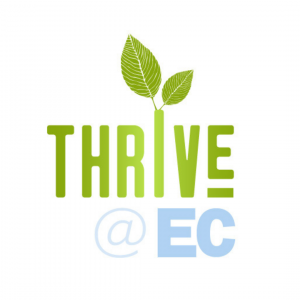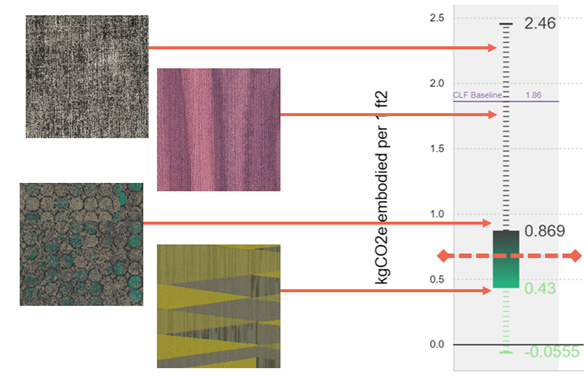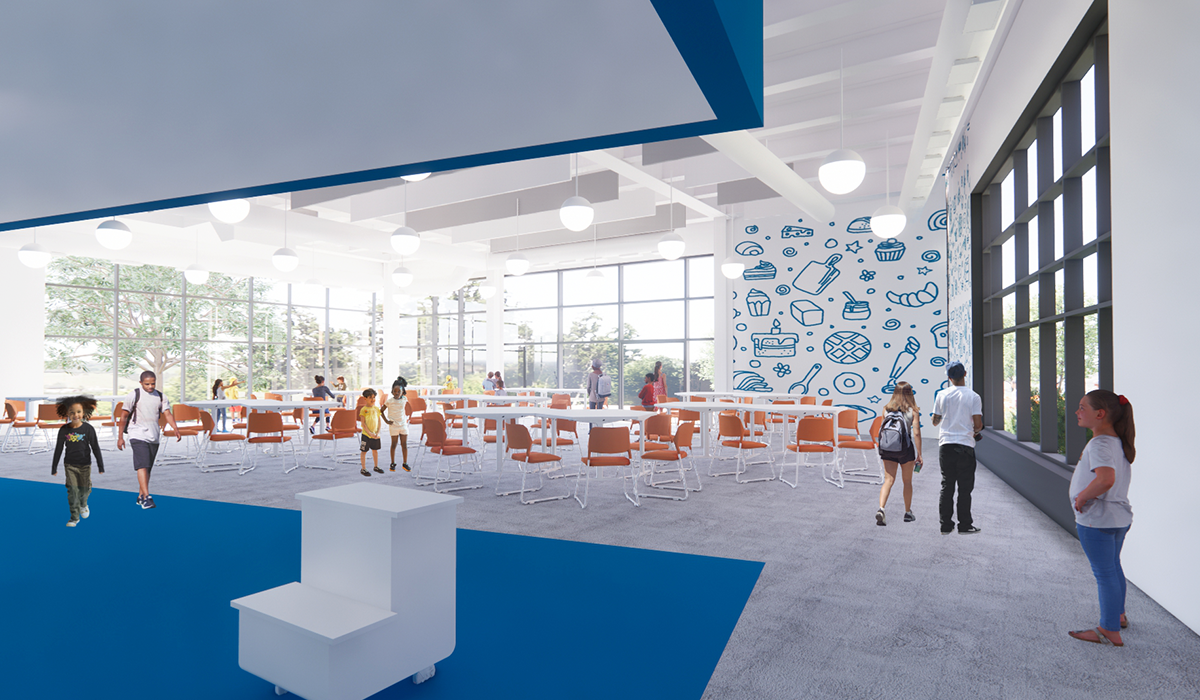
Materials Health & Carbon: How Material Selection Can Support Human Wellbeing, Environmental Health, and Social Equity
Material selection impacts human wellness and the health of the environment that surrounds us.

Each Earth Day, we like to reach out to our networks and discuss the areas of sustainable design or new technologies we’ve been exploring. Last year, our Thrive@EC network – our internal organization that provides current sustainability resources and education in support of projects and operations at EwingCole – took on the topic of decarbonization. This year, we’re continuing with decarbonization but breaking it down and spreading it out. We’re moving forward from building an overall understanding of operational and embodied carbon emissions to more detailed explorations of how decarbonization impacts each of our design disciplines – engineering, architecture, and interiors. One of those tracks involves a deeper dive into the embodied carbon impact of interior materials. Another begins to explore how the effects on social equity permeate the construction industry. A third track involves tying embodied carbon into a broader understanding of material selection and its impacts on human wellness and the health of the natural environment.
Embodied Carbon & Interiors
Thrive@EC has been invested in reducing embodied carbon emissions, which are related to the manufacturing, transportation, and installation of building materials, as opposed to operational emissions that arise from running a building’s equipment and HVAC and lighting systems. While we must give significant attention to building materials with the largest initial carbon impact - structure and envelope systems – we can’t ignore the other contributors, such as interior finishes. When considering renovations over the lifetime of a building, the embodied carbon associated with the replacement of interior finishes adds up. Flooring is one interior finish with embodied carbon reduction potential. Due to its ubiquitous use, the carpet tile provides an important opportunity to target embodied carbon reduction in our project specifications.

To do this, we had to determine the appropriate Global Warming Potential (GWP) threshold for carpet tiles. GWP measures the impact of rising greenhouse gas (GHG) emissions in the atmosphere, and the standard unit of measure is kgCO2e (kilograms of carbon dioxide equivalent). We can define the relative carbon impact of one material selection against another using GWP as a measure. To determine a GWP threshold that we could consider adding to our specification, we used Building Transparency’s EC3 tool to review detailed product data. Our goal was to achieve the following criteria:
- Allow for a notable decrease in embodied carbon compared to the average product (i.e., below the 80th percentile in EC3)
- Understand how much a set threshold would impact the products we can specify
- Allow us to identify the synergies between carpets low in embodied carbon that contributed to material ingredients and supply chain optimization.
The Materials Focus Group in Thrive@EC is continuing to finalize a GWP threshold for carpet tile this year. The process will then inform the setting of this threshold type for other material categories.

Social Equity in Design
Social equity in design looks at the intersection of developing the built environment, environmental degradation effects, and human rights to ensure the fair treatment and involvement of all people and communities, which includes building occupants, those working in construction, neighbors, and the people involved in the material supply chain. While social equity is one of the original three pillars of sustainability – equity, environment, economy - it is often less of a focus than its counterparts, partly because of how difficult it is to measure. Our Social Equity in Design (SEID) initiative seeks to take a holistic look at equity within the breadth of our industry, and we are starting with the material supply chain. It is one of the farthest-reaching tendrils that connect people's health and ecosystems around the globe to projects in our backyards.
How materials are made, what they’re made of, and where they are made affect the health, wellbeing, and safety of people and communities along the way.
We acknowledge that the industry is young in its understanding of this topic, and we have begun our efforts by learning about international labor protections. By pursuing the LEED Pilot Credit for Equity within the Supply Chain (IPpc144), we are familiarizing ourselves with the 8 Fundamental Conventions of the International Labour Organization (ILO). These conventions map forward into company and product standards that we are using to set priorities in our material selection process.
We are also learning from the work of Grace Farms Design for Freedom Principles and the recently released Toolkit. Some materials are inherently at higher risk for forced labor and other injustices. We plan to use these resources to further inform our outreach to manufacturers, our coordination with contractors on proposed alternates or substitutions, and our selection process.

Materials Tracking and the AIA Materials Pledge
We know that addressing embodied carbon emissions is critical to reducing climate change impacts, and we are building our evaluation capabilities to make material choices that support equitable opportunities for communities around the world. We can have an even more significant impact if we consider these topics in concert with many other aspects of material selection at the same time.
We believe that the materials that make up the built environment can directly impact both the health of the environment and human well-being. As a signatory of the AIA Materials Pledge, we’re channeling this effort into providing the tools and resources our integrated team needs to reduce waste, advance equitable designs, and become stewards of natural resources.
Last year, we developed and implemented a tracking spreadsheet that allows project teams to capture critical material data related to ingredient disclosure, supply chain transparency, and impacts on planetary and human health. The framework is based on the AIA Material Pledge categories of Human Health, Climate Health, Ecosystem Health, Social Health and Equity, in a Circular Economy. While enabling tracking across many categories, the framework also allows teams to tailor their material choices toward specific project sustainability goals and provides a pathway to building an internal materials data repository.
We know that the materials selection process on any project is a complex topic and comprises significant amounts of time, research, outreach, and documentation. As we build our internal database, we empower teams to take a holistic approach to this process, increasingly selecting materials that meet high thresholds for sustainability criteria alongside performance criteria for use, durability, and cleanability.





